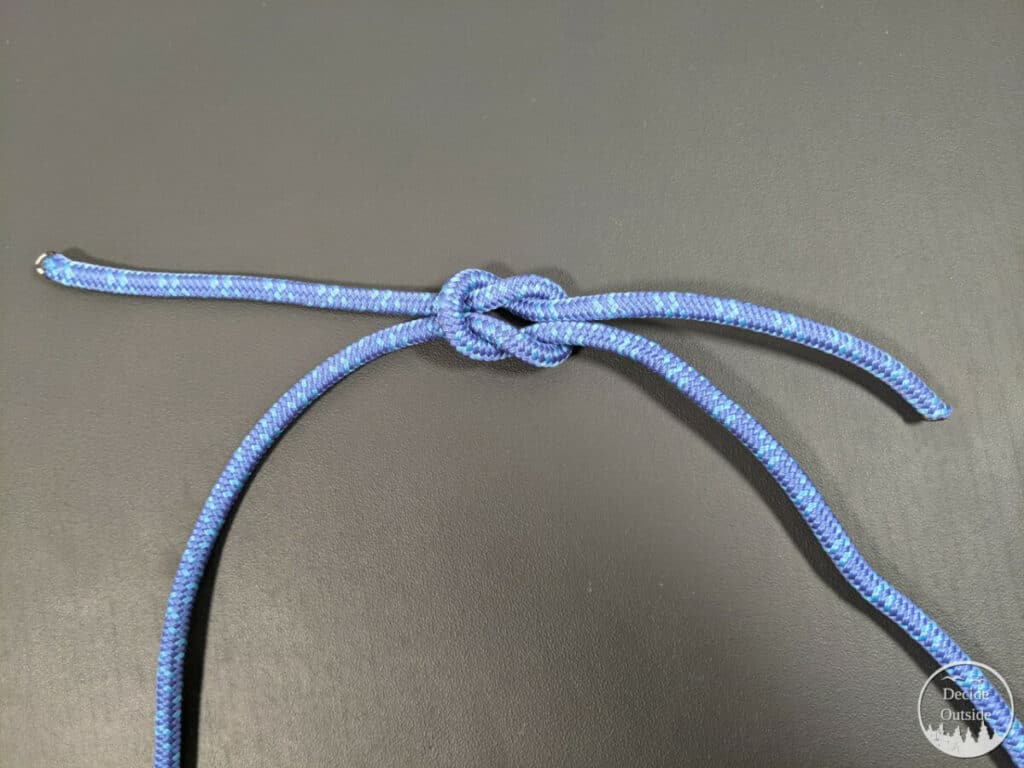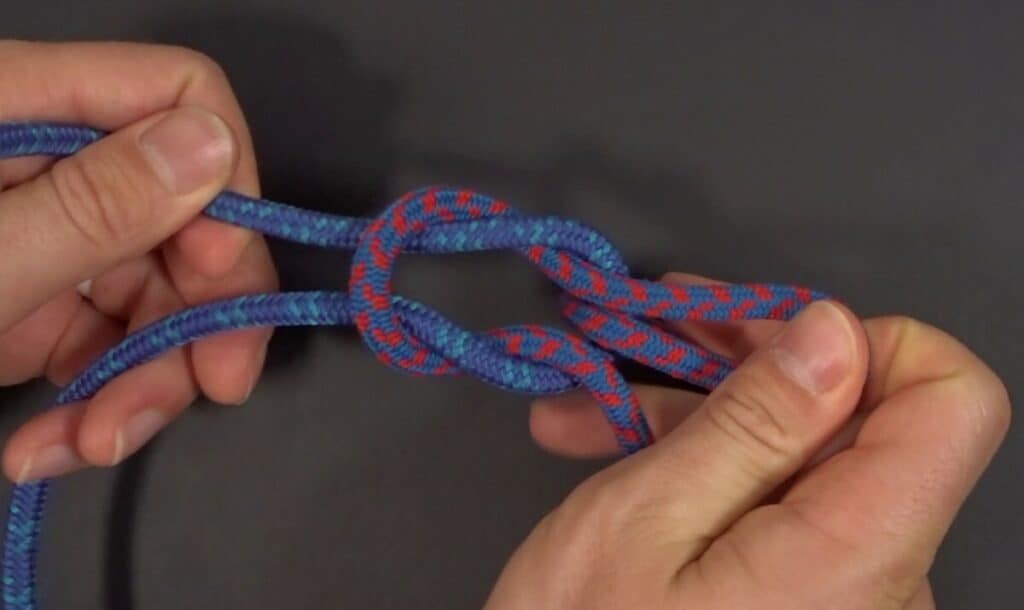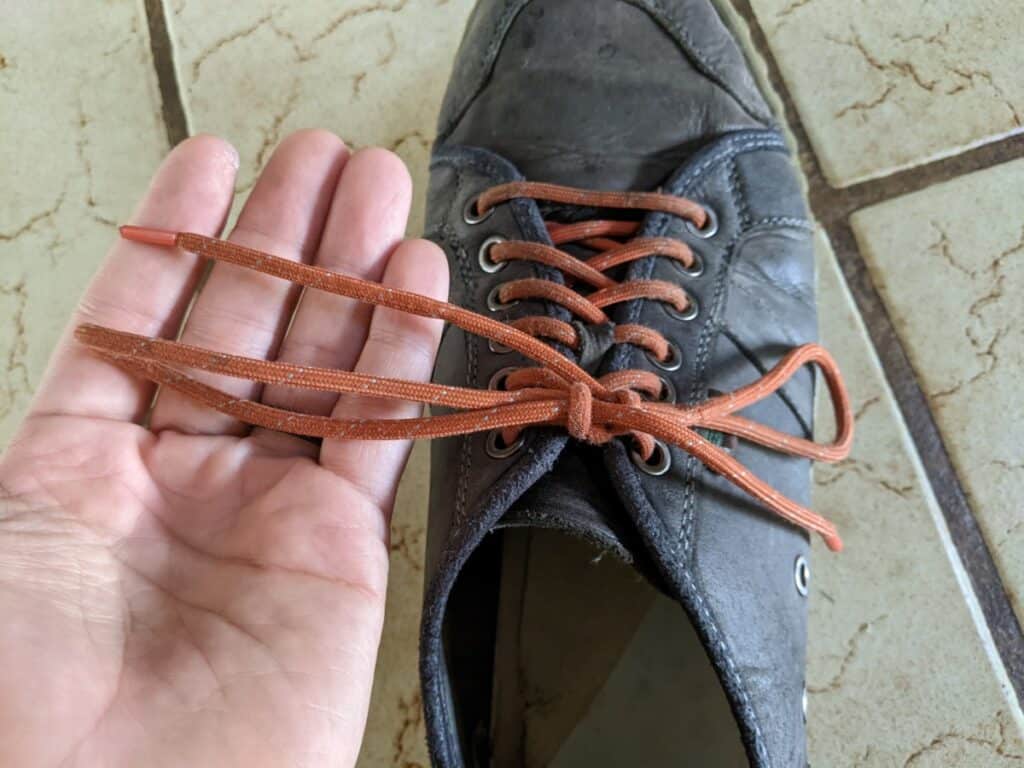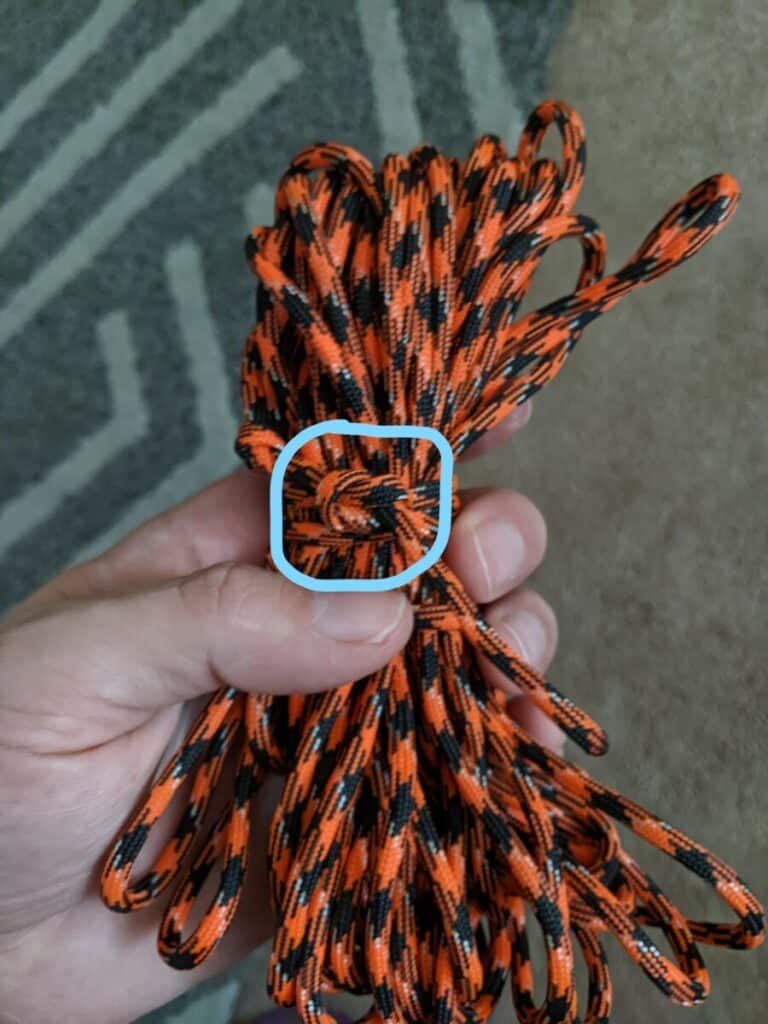A lot of people talk about the square knot (or the reef knot as its called) and believe it or knot… (sorry, have to make that joke at least ONCE during this article), there is actually a lot to know about the purposes of the square knot and what you can do with it.
The square knot is most useful as a binding knot, meaning it is most useful to secure rope around an object, but, in a pinch the square knot can be used as a bend although it is not ideal. The square knot is often tied incorrectly and insecurely.
If you come with me for a moment, I can show you why you may not know as much about the square knot as you might think–also, I’ll be sharing actual examples of where you can use the square knot in real life. If you want to jump straight to the examples, click here.
By the way, as an Amazon Associate, I earn when buying qualified products through links on my site.

What Is the Square Knot Used For?
The square knot is most useful when it’s used as a binding knot. A binding knot is a knot where you don’t want the rope to shrink or lengthen so you can secure an object in place. The square knot is a very simple binding knot to tie and can be very useful in a lot of circumstances.
Sometimes it’s hard to imagine the usefulness, so I’d highly recommend reading on and looking at the examples section of this article so you can get a better idea of where to use things.
The square knot can actually be somewhat insecure–in fact with some stiff rope you can just push the two ends of the tied rope together and you’ll see the knot come apart really easily.
This is partially why the square knot shouldn’t be relied on for a bend (a knot that ties two ropes together). Excessive strain can actually pull this knot apart. If you’re using the square knot as a bend for light applications, it will be perfectly fine–but if you need to put your body weight on it or if you want to tie your car to a hitch (which I hope you never have to do that), then you need a stronger bend (I really like the Double Sheet Bend or the Double Fisherman’s Knot if you want a very secure bend).
Are you tired of not knowing which knot to use and when? Check out my free 5-day knot course! You will learn 1 essential knot per day with detailed video and picture instructions. And you’ll get it in your email! Check it out here.

Advantages of the Square Knot
- Easy to tie. Left over right. Right over Left. (Or right over left, left over right).
- Easy to remember. This knot is very straightforward and so when you’re in a bind (hah) you can usually remember your square knot even if you forget everything else.
- Quick to tie: When you’re in a hurry, sometimes knots that require a lot of fairing and massaging to be perfect are not what you want. If you want a knot you can tie in less than 3 seconds, then the square knot can be clutch.
- Not impossible to untie: Although this knot does bind a bit when you put on load, you can “break its back” fairly easily by pulling the two standing ends together which makes this a cinch to untie. If you’re putting a lot of load on your square knot, I’d definitely recommend thinking of other knots.
- Can be tied with a quick release: Like many knots, the square knot can be tied with bights so it can be easily released. Check out the tying your shoes example if you want to see what I mean.
- Can be tied with stiff rope: Sometimes stiff rope can make it difficult to make hard bends like any knot that uses half hitches or anytime the rope needs to hairpin. The way the square knot is tied makes this easy even with stiff rope
Disadvantages of the Square Knot
- Easy to mess up. If you do Left Over Right, and then Left Over Right again (easy to do), you have what’s called the granny knot, which is less secure and also is annoying to untie.
- Very insecure when used with different sizes of rope. (you should use the Sheet Bend for that).
- Can come undone very easily with stiff rope. If you push on both standing ends of the rope towards one another this knot will fly out of place.
- Can slip under heavy load. This depends on your rope and how much working end you left on the end of the knot, but I’ve seen it where if you put a lot of pressure the working end of the rope can come undone.
Important Variations
Making the Square Knot More Secure
You can always half-hitch the leftover lengths of the rope if you want to secure the knot.
- Tie a regular square knot, right over and under left, and then left over and under right. Make sure and leave yourself plenty of loose end on both sides of the square knot.
- Wrap the loose end of the square knot around the standing part of the rope that it’s right next to, and then feed it back through the loop you just made, forming a half hitch.
- Do the same with the other side
Adding Quick Release To the Square Knot (Square Knot On A Bight)
- Start the square knot as you normally would with a half knot (right over left)
- Cross the ropes in an x, left over right, but don’t pull the left under the right through like you would a square knot, instead, form a loop on the left rope and pull the loop through instead as shown in the picture.
- Tighten by pulling the standing parts (not the loose ends)

Adding a quick release to the square knot can make the square knot much easier to untie. All you do is pull the loose end of the loop and voila! you’re out of the square knot.
You can add a loop to BOTH sides of the square knot so you would have a square knot with two loops, and then you have how I tie my shoes. P.S. This is the best method I’ve tested for tying my shoes.
Examples Of How You Can Use the Square Knot
The square knot is a foundation knot. It’s everywhere. Once you get into more knot-work you’ll see that you’ll use it in a ton of different scenarios.
Below are just a few examples of what you can do in real life to use the square knot.
Tying Your Shoes
This is my favorite use of the square knot. You might already tie your shoes this way, but I grew up tying my shoes some other way (I’m not sure I could tell you how to do it the old way, now) and my laces would always slip out, over time.

I eventually found that a square knot with two bights is the rockstar of shoe tying methods. To tie it, follow the instructions for tying a quick release square knot except put a loop through both sides. The laces stay tightened without slipping out, and it’s very easy to untie if you pull the quick-release ends.
Securing a Bundle
In essence, when you are tying your shoes, you are securing a bundle–but you can use this to secure any type of bundle.
If you are carrying a big stack of blankets you can wrap the rope around the blankets a few times and then tie off the ends in a square knot. You’ll be amazed at how much more comfortable that is to carry by holding the ropes instead of keeping your arms around the blankets.
Wrapping a Gift
There are lots of decorative knots you can use to tie string around a present, but a simple square knot can do the trick. If you want to be able to undo the knot easily, you can use the same knot for tying shoes: the double bight square knot.
Securing a Long Thin Bundle
You can even use the square knot to tie off long thin bundles. Have you ever tried to carry a bunch of ski poles, garden tools, oars, or something like that? It’s a big pain, but you can actually tie off a square knot on both ends of a long thin bundle to keep them secure.

If you look closely at this picture you’ll notice that that the two ropes are wrapped around each end in an S shape and are tied off with a square knot. This is a super effective and easy to tie and untie method of keeping a long thin bundle secure.
Starter To the Surgeon’s Knot
The square knot process is extremely similar to the Surgeon’s Knot. The Surgeon’s Knot is essentially a square knot where you do the following:
- Right over and under left
- Left over and under right, and over and under right again.

The Surgeon’s knot has a bit more security and supposedly was used by some Surgeons as they tie sutures. From what I understand the Surgeon’s knot isn’t used anymore but if it was good enough for someone to tie sutures, it’s good enough for me if I want a secure binding knot!
Securing a Rope Coil
I often will use a square knot when I’m trying to secure my small rope coils. I’ll coil my paracord around my hand in figure eights, and then I will wrap the paracord loose end around the coil and then tie a square knot with the opposite end after pulling the bind tightly.

How To Tie The Square Knot
I dive into exactly how to tie the square knot in my post, here. I share videos and pictures, whichever works better for you. I also show you how to untie the knot, as well.
